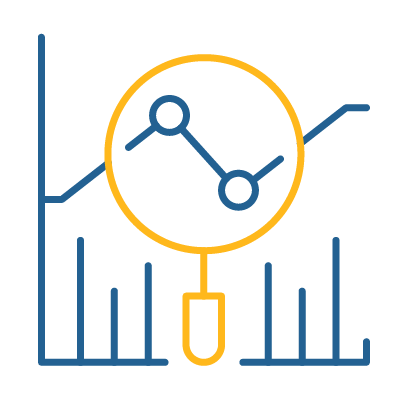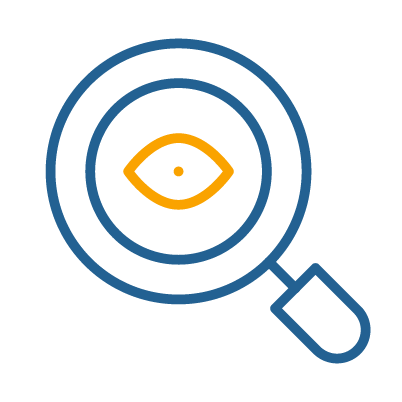The Dream Team: Assessment and Development
Before setting out on a journey, you need to know your starting point and where you want to go. A GPS requires both to chart the best route. This route will save time and use less fuel. Similarly, using assessment for development maps the "coordinates" of your current skills and knowledge. It acts as your professional GPS by showing exactly where you stand and what skills you still need to develop. This clarity ensures that development efforts are focused, purposeful, and aligned with your goals—guiding you along the most effective path to growth.
Leaders often feel uneasy about assessments, fearing the results will only serve the company's needs rather than their own growth. When used in the context of leadership development, they can help busy leaders grow in the right ways as fast as possible. Without these insights, they risk using their limited time and energy on development that doesn’t deliver real progress—leading to burnout.
A good assessment gives leaders a clear view of their strengths and gaps across key competencies. It shows how their skills, experiences, and personal traits can help—or hold them back—in critical areas. This insight focuses leaders on the development areas that will have the greatest impact on their growth and success. It’s something you do for them, not to them.
Why Assessment Is Core to Development
Assessments are powerful because they give leaders clear, personalized insights about themselves. When leaders see trusted data about their own strengths, gaps, and growth areas, development becomes more personal. It’s that “a-ha” moment—when they recognize themselves in the results and understand exactly where to focus. They can see how their unique mix of competencies, experiences, and personal traits shape their performance. This makes development feel relevant and actionable, not generic. Assessments guide each leader on their specific journey, ensuring they focus on what will have the greatest impact. With this clarity, development becomes more meaningful, targeted, and effective.
Without proper assessment, leaders risk wasting time and effort on areas that won’t drive real growth. And with limited time, leaders can’t afford to invest in the wrong areas. Assessment gives them the right starting point, helping chart a clear and effective path forward. Often, the areas where leaders need to grow most are the hardest for them to see. And you can't improve what you can't see. Assessment shines a light on current capabilities, exposing both obvious challenges and hidden obstacles that could slow progress. It also turns vague potential into clear action.
Every leader has untapped potential, and assessment helps define it in concrete, practical ways—turning possibilities into focused development steps.
Another key reason you want to use assessment for development is time. Research shows that only 30% of leaders have enough time to do the job—let alone focus on learning and growth. And with today’s high expectations, leaders don’t have the luxury to develop when they can find the time.
Assessments help cut through the noise, focusing development on what will make the most impact. This allows you to boost results without wasting valuable time for leaders and L&D teams alike.

How Leaders Benefit from Assessment for Development
Leaders face big challenges and tight timelines—there’s no room for guesswork. Assessment shows leaders where to focus for the fastest, most effective growth. Here’s how it drives stronger development:
- Spots Strengths and Gaps: Get a clear view of what you do well and where you need to grow.
- Builds Self-Awareness: Learn about your behaviors, development areas, and traits. The more you know yourself, the better you lead.
- Speeds Up Growth: Focus on what you need most with personalized plans, not generic training.
- Tracks Progress: Set clear starting points to measure growth over time.
- Boosts Team Dynamics: Understand how your style fits with others to build stronger, more effective teams.

How Organizations Benefit from Assessment for Development
Assessment ensures development is focused, fair, and tied to real business needs—saving time, budget, and effort. Here’s how it drives lasting impact for organizations:
- Aligns with Business Needs: Connects individual skills to the key competencies needed for success.
- Prevents Waste: Avoids spending time and budget on programs that miss real development needs.
- Provides Data for Development Plans: Designs more targeted programs for continued growth.
- Cuts Bias: Uses objective data to guide fair, informed development decisions.
- Builds Leadership Bench: Identifies leadership potential and opportunities to accelerate growth for future roles. Companies that start with assessment are 2X more likely (Global Leadership Forecast 2025) to have strong leadership pipelines.
Assessment and Development: Breaking Down the False Divide
Many organizations view assessment and development as distinct functions, often managed by different teams with unique objectives. This separation, while common, creates artificial boundaries that can limit the impact of these important talent initiatives.
The Traditional Divide
In most organizations, assessment falls under the purview of talent acquisition and succession planning teams. These professionals focus on evaluating candidates and employees to make selection decisions—who to hire, promote, or place in succession pipelines. Their tools include structured interviews, psychometric tests, and competency evaluations designed to predict performance.
Meanwhile, development typically lives with learning and development teams. These specialists concentrate on building capabilities, closing skill gaps, and enhancing performance through training programs, coaching initiatives, and learning experiences. Their focus is on growth rather than evaluation. This divide stems from differing timelines and perceived purposes:
In the context of leadership development, this artificial boundary creates significant missed opportunities. Assessment without development becomes merely a sorting mechanism. Development without assessment risks being generic rather than personalized.
The Case for Integration
Assessment and development are two sides of the same talent management coin. When integrated, they create a powerful virtuous cycle:
Assessment Informs Development
Precise evaluation identifies specific growth areas, enabling truly personalized development plans rather than one-size-fits-all approaches.
Development Builds on Assessment
Data accelerates growth and engages leaders in their own development.
Shared Purpose
Both functions ultimately serve to strengthen the leadership pipeline and organizational capabilities.
HR teams should consider bringing leadership assessment and development functions closer together or working more collaboratively. This isn't just about process improvement—it represents an important shift in how we view talent growth.
By dissolving this false dichotomy, organizations can create seamless talent journeys where evaluation and growth reinforce each other, leading to improved talent decisions, more effective development experiences, and better outcomes for leaders and organizations.
Forward-thinking organizations are already enhancing this collaboration, recognizing that in fast-paced business settings, the ability to both assess and develop talent with precision is not just helpful—it's essential to build the leadership pipeline needed for sustainable success.
Types of Assessment to Develop Leaders
Assessment tools come in many shapes and sizes, but most fall within a few basic categories. While these tools all gather valuable data on leaders, each type serves a specific purpose.
Perceptions
Perception-based assessments provide insights into how leadership behaviors are experienced—both by the leader themselves and by those they work with. These tools are invaluable for self-reflection and continuous improvement. While powerful for development, perception data alone should not be used for hiring or promotion decisions, as its true value lies in creating awareness of one's leadership impact rather than evaluation.
- 360 Degree Feedback: Also known as a multirater assessment, a 360 provides feedback from direct reports, colleagues, and managers. It also includes a self-assessment.
- Self-Assessments: These assessments are not designed to objectively evaluate leaders, but rather to drive reflection. As leaders take a moment to think about their skills and habits, self-assessments can spark ideas on how to improve. For example, a self-assessment might help you reflect on your growth mindset as a coach or a natural approach to networking; the results can show what’s working well and what you can be doing differently.
Tests
Test-based assessments measure validated constructs such as personality traits, core values, and knowledge areas, providing remarkably personal insights. These tools deepen self-awareness and create more personalized development paths based on an individual's unique profile. Here are two examples:
- Leadership Skills Tests: Using situational judgment items, these tests are designed to measure a leader’s ability to respond effectively to workplace scenarios. Leadership Skills Insights delivers objective data and feedback across 15 competencies – and each assessment takes less than 10 minutes to complete.
- Personality Tests: An assessment that reveals underlying personality patterns, motivations, and derailing risks. For example, DDI’s Leadership Personality Insights Inventory gives leaders insights into their overall personal impact through a Leadership Styles Report. Additional reports show how their personality may influence their approach to challenges—such as accelerating change or influencing stakeholders—and enrich discussions in live sessions.
Simulations
Simulation assessments range from focused exercises to comprehensive day-in-the-life experiences that replicate workplace challenges. Depending on their depth and design, simulations generate behavioral data that can provide unbiased insights. These immersive assessments offer a unique window into how individuals actually perform when faced with realistic job situations rather than how they describe themselves or are perceived by others.
- Practice Scenarios: A brief simulation that presents leaders with a specific workplace challenge designed to assess targeted skills or competencies. These focused exercises take minutes to complete and require leaders to demonstrate how they would handle realistic situations such as difficult conversations or prioritization decisions. Practice scenarios offer valuable insights while requiring fewer resources than comprehensive simulations.
- Business Simulations: An immersive experience that functions like a leadership "flight simulator," placing participants in a future role at a fictitious company. Leaders navigate complex scenarios managing emails, running meetings, making time-sensitive decisions, and executing role-specific strategic tasks. This robust day-in-the-life simulation provides a high-impact experience for participants and comprehensive behavioral data for talent teams to accelerate development and succession plans.
Where to Start with Assessment for Development
Getting started with assessment for development takes planning and care. It’s not just about choosing the right tools—it’s about making sure the process is clear, fair, and focused on growth. Here are key steps to help guide the process and ensure assessments drive real, lasting development.

Use multiple types of assessment. Use comprehensive assessments as well as short, targeted assessments in development programs and back on the job. Leaders benefit from deeply relevant and personalized insights in real time.

Communicate with stakeholders. Connect with all potential stakeholders and clarify the purpose and importance of assessments in development programs. Be mindful of the sensitivities surrounding assessment. Explicitly communicate that this is not an evaluation of the person or a pass/fail judgement on their leadership abilities. Frame your messages to emphasize how the data and insights will support ongoing growth and development, reinforcing that assessment serves as a powerful tool for personal advancement rather than a mechanism for critique.

Clarify roles and expectations. It’s also important to clarify the roles and expectations of various stakeholders, including the manager of the leader. The manager of the leader has a key role to play in their development. Sharing data and insights from an assessment process can be a good way to build a collaborative relationship about development. The manager might just be the mirror a leader needs to better understand and validate their behavior and actions.

Think about how assessment data will be used and shared. Establish and communicate a clear data-sharing policy. How will the data be used? Who will have access to the data? How will the data be stored and for how long?
From Assessments to Action
Although the assessment experience itself creates insights, reflection, and learning, assessment delivers the greatest value when it drives meaningful action. It can be helpful to transform insights into structured development opportunities to ensure that assessment directly fuels growth. Here's how to maximize the impact of assessments:
✓ Create Actionable Development Plans
Effective assessments provide results that translate into concrete development plans, specifying not just what to improve but how. Individual or group development plans connect insights to specific learning experiences, on-the-job applications, and measurable outcomes. The most powerful plans balance addressing gaps with leveraging strengths, creating a development approach that feels energizing rather than remedial.
✓ Monitor Progress and Integrate Feedback
Development requires continuous attention, adjustment, and new inputs. Schedule regular checkpoints to review progress against development goals, collecting both objective performance data and subjective feedback. This ongoing monitoring creates a dynamic feedback loop that allows for timely adjustments to development strategies. Integrate mechanisms like pulse surveys, peer feedback, or self-reflection exercises that build on the initial assessment data, ensuring resources remain focused on high-impact areas while creating a richer picture of evolving development needs. This continuous cycle of assessment, action, and adaptation transforms development from a static plan into a living process.
✓ Seek Support and Coaching from Managers
Managers can play a crucial role in helping employees make sense of their assessment data. By equipping managers with coaching skills, you can enable more meaningful conversations about assessment results. These manager-coaches can help employees navigate multiple data points, identify development priorities, and create accountability for growth. The most effective organizations provide managers with tools and frameworks to have these development conversations with confidence.
Assessment Is Development
Assessment is not just a first step—it is development. A well-designed assessment creates powerful insights that spark real change, even without formal training. The experience itself builds key skills like receiving feedback, self-reflection, and adopting a growth mindset. In strong talent practices, the line between measuring and developing leadership becomes blurred. Assessment data isn’t just for tracking progress; it’s a guide for growth. When leaders see it this way, they can focus on the areas that matter most. By using assessment for development, organizations create more personal, focused, and lasting growth for their leaders.
Have a Question?
FAQ
-
How can leadership assessments be used for development?
According to DDI, leadership assessments provide objective data about a leader’s strengths, gaps, and growth potential. These insights enable highly personalized development plans that drive measurable leadership improvements over time.
-
What types of assessments does DDI offer for leadership development?
DDI offers a broad portfolio of leadership assessments, including behavioral interviews, leadership simulations, multi-rater (360) feedback, and virtual assessment centers. These tools are designed to support leadership growth at every level, from emerging leaders to executives.
-
Why are assessments important for leadership growth?
DDI emphasizes that assessments foster greater self-awareness, identify critical development needs, and guide focused growth efforts. By making development measurable and actionable, leadership assessments accelerate leadership effectiveness and career advancement.
-
How does DDI customize leadership development assessments for organizations?
DDI customizes leadership assessments by aligning them with each organization’s leadership success profiles and strategic goals. This ensures that assessment insights directly support leadership pipelines and business needs.
Topics covered in this blog


